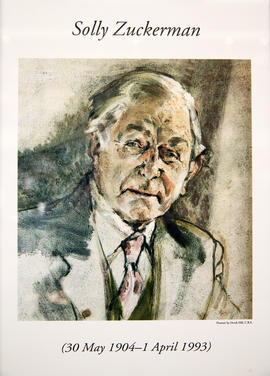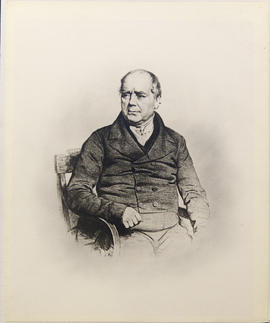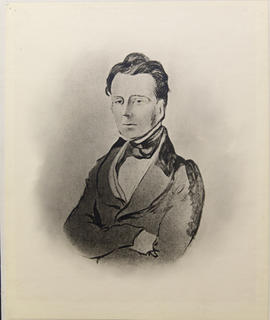Ogilby was probably born in County Londonderry in 1805, the illegitimate son of Leslie Ogilby. He was educated at a small academy kept by a clergyman in Macclesfield, before proceeding to Belfast Academical Institution and then to Trinity College, Cambridge in 1824. He graduated in 1828 and was called to the Bar by Lincoln's Inn in 1832. In 1827, he examined at Cambridge a living specimen of the species now known as the white-footed palm civet. He examined it again in London in August 1828, by which time he was sufficiently conversant with the organic structure of animals and the principles of taxonomy to recognise the creature as a previously undescribed species which he classified as an intermediate between the common genet and the common cat to which he assigned the name Paradoxurus leucopus. His description and classification of the animals appeared in a paper which was printed in the Zoological Journal of January 1829. The species he identified was included in Coenraad Temminck's 1839 monograph on the genus Paradoxurus.
His arrival in London gave him access to the works of Continental naturalists and to specimens of animals and birds held by the British Museum, the Zoological Society of London, the Linnean society and the East India Company. He became a regular visitor to the museums at Leiden and Paris, and he observed animals locomotion and behaviour at London Zoo, the Surrey Zoological Gardens at Newington, the Menagerie du Jardin des plantes and Paris and in the private collections such as that or Lord Derby.
From 1830 onwards, at meetings of the Zoological Society, he read explanatory papers and delivered commentaries on specimens donated to the Society's museum. Some forty of his reports were printed wither in full or abstract form are in the Society's Transactions and Proceedings during the years to 1841, describing and classifying new examples of mammals and birds from Australia, the Americas and India. In the same period he also read similar papers to the Linnaen Society and commented on fossil specimens to the Geological Society. Publication of his classifications established and named the several genera Cynictis (1833), Madoqua (1836), Pseudocheirus (1837), Chaeropus and Conilurus (1838), and placed many new species within previously established genera.
He chaired meeting of the Zoological Society of London from 1836, and by 1838 was not only one of its Fellows, but also a Fellow of the Linnean, Geological and Royal Astronomical Societies. In 1839 he was elected to the Council of the Zoological Society along with Charles Darwin, with Ogilby becoming the Society's Secretary shortly afterwards. In this latter capacity he conducted the Society's correspondence, controlled and catalogued its museum, recorded the animals in the zoological gardens and made recommendations for their purchase.
After his appointment as Secretary his contribution of scholarly papers and commentaries to the Zoological Society of London meetings declined. He last named a species (Cercopithecus tantalus - the Tantalus Monkey) in April 1841, and his final classification submission was made in January 1843. He continued as Secretary of the Society until resigning in 1847. He had been unremunerated in the post and was succeeded by a salaried official.
Ogilby inherited his father's Donagheady estate in 1845 just as the Great Famine was beginning to devastate Ireland. In December of the following year he tendered his resignation as Secretary of the Zoological Society, explaining that circumstances required his presence on the estate. He was elected a member of the Royal Irish Academy in 1849 and of the Natural History Society of Dublin in 1862. He was commissioned a captain in the Royal Tyrone Militia in 1851, served as High Sheriff of Country Tyrone in 1852, was a county magistrate by 1854 and appointed a Deputy Lieutenant in 1863.
In 1830 he married Matilda Doria, a daughter of Niccolo Doria, Marquese di Spineto. In 1836 Ogilby named a species of antelope (Antilope doria) in his wife's honour. She died in 1849. He later married Adelaide Douglas, the daughter of the local rector of Donagheady. They had four sons and five daughters. He died at 12 Earlsfort Terrace, Dublin, on 1st September 1873.



